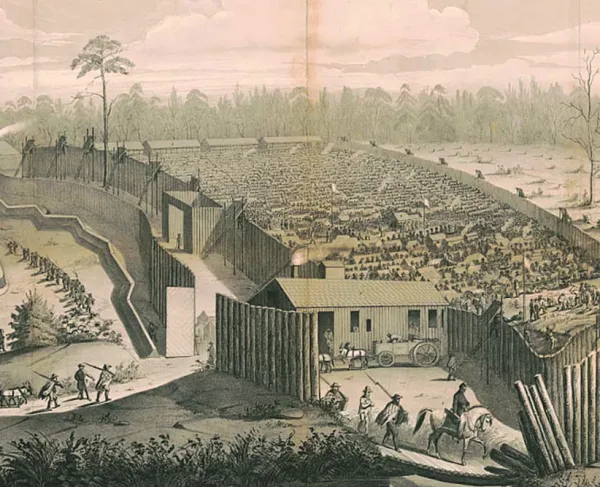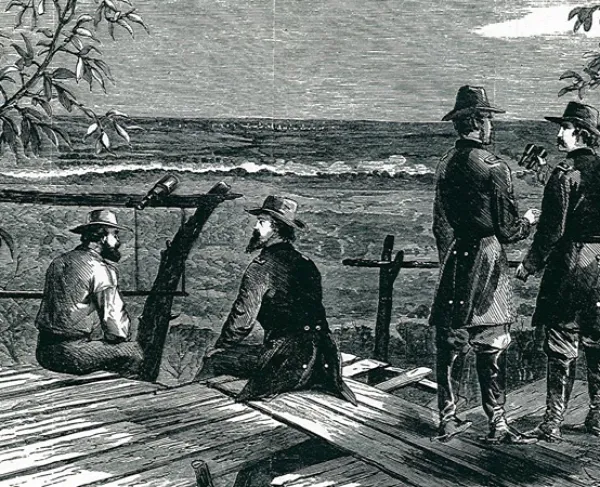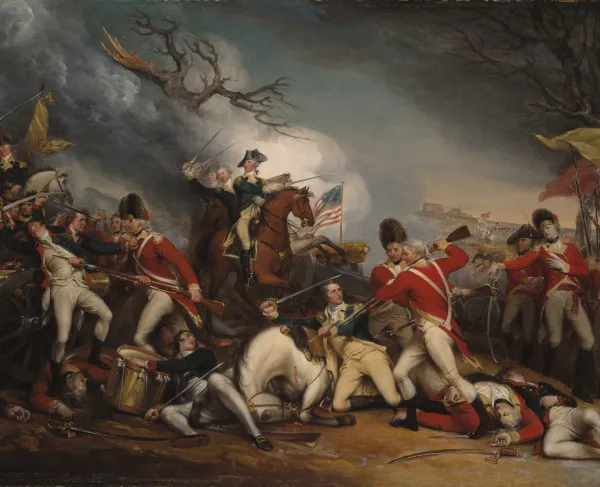Death of McPherson

Stephen Davis
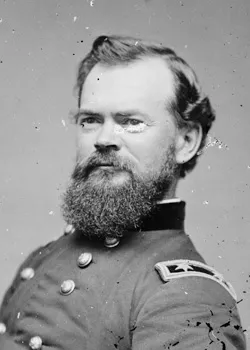
On July 21, 1864, Gen. William T. Sherman's three armies were more or less separated. Better yet, Confederate Maj. Gen. Joseph Wheeler reported that as Gen. James B. McPherson's army marched in on Atlanta from the east, it had its left flank "in the air" (Sherman had sent Kenner Garrard's cavalry east to wreck the Georgia Railroad). This situation presented Gen. John Bell Hood with an opportunity to launch a flank attack, like the one made famous by Jackson at Chancellorsville. Hood planned for his forces to drop back from their outer lines north of the city into the main fortified perimeter around the city on the night of July 21-22; Gen. Alexander P. Stewart and Maj. Gen. Benjamin Cheatham would hold the works. Lt. Gen. William Hardee's corps would march through and out of the city, southeast then northeast toward Decateur, guided by Wheeler's cavalry, and jump into McPherson's left-rear while Wheeler attacked McPherson's wagon trains.
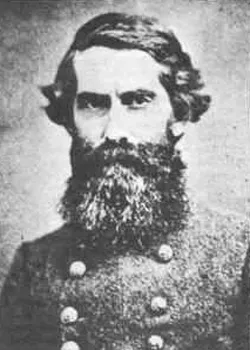
It was an ambitious plan, calling for a 15-mile night march by Hardee's troops and a dawn attack on the 22nd. But a late start, exhaustion of the men, a hot night, dusty roads, and poor service from the cavalry combined to bring the four assault divisions not nearly far enough into McPherson's rear when Hardee, well behind schedule, decided to deploy. Then rough terrain added further delay—Confederate Maj. Gen. W.H.T. Walker was shot and killed getting his division into place. Hardee's surprise attack did not begin till shortly after noon.
The Federals were blessed with a lot of good luck that day. By chance, a Union division under Brig. Gen. Thomas W. Sweeny happened to be in just the right position to meet Hardee's opening assault. Instead of overrunning hospital tents and wagon trains in McPherson's rear, Walker's and Bate's troops ran instead face-to-face into a division of veteran enemy infantry.
General McPherson, having left Sherman's headquarters at the Augustus Hurt House (now Carter Center) just before the firing started, was on this part of the field watching Sweeny contend with the Rebels. Then he rode off to see how Frank Blair's Seventeenth Corps was doing; by now it had been struck by Maj. Gen. Patrick Cleburne's hard-hitting division. McPherson and his staff were riding down a wagon road when they unexpectedly rain into part of Cleburne's line. "He came upon us suddenly," remembered Capt. Richard Beard of the 5th Confederate:

"I threw up my sword as a signal for him to surrender. He checked his horse, raised his hat in salute, wheeled to the right and dashed off to the rear in a gallop. Corporal Coleman, standing near me, was ordered to fire, and it was his shot that brought General McPherson down."
McPherson's subordinates dashed off. One Union officer struck a tree in his flight; the blow smashed his pocket watch and froze the time of the general's death—2:02 p.m. Confederate Captain Beard came up to the body and saw a bullet hole in the back, near the heart. He stayed only long enough to identify the fallen enemy officer as McPherson before continuing his advance. Later, one of McPherson's staff officers led an ambulance back to the scene, retrieved the general's corpse, and bore it to Sherman's headquarters. Sherman was moved with grief for his friend, only the second Union army commander killed during the war.
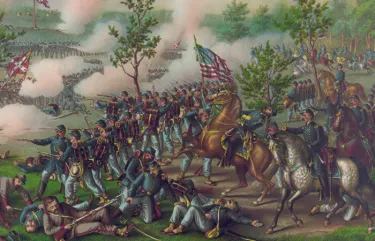
Cleburne's attack initially overran part of the Union line, capturing two guns and several hundred prisoners. Then the Southerners ran up against infantry and artillery on a hill occupied by Brig. Gen. Mortimer Leggett's division, and were stopped. Maney's Confederate division joined in the fight, but Leggett held onto his hill.
Around 3:00 p.m., Hood ordered Cheatham's division to launch an attack from Atlanta's eastern line of works. Cheatham's assault against the Federal line held by John A. Logan's Fifteenth Corps met with initial success, overrunning the Yankee line at the Troup Hurt House and capturing artillery, until a Union counterattack forced it back. Cleburne's and Maney's divisions gave up their fight, too, as at the end of the afternoon the Confederates retired to their initial positions. The Battle of Atlanta was ended, save for sporadic artillery and rifle fire into the night.

General Logan, named to replaced McPherson for the moment, reported 3,722 killed, wounded, or missing in the Army of the Tennessee. Hardee counted 3,299 casualties in his corps, while Cheatham's lost probably half that number. Adding in several hundred casualties in Wheeler's cavalry (from its unsuccessful attack on the Union wagon train at Decateur) Confederate losses on July 22 add up to about 5,500. Hood's effort to roll up Sherman's left flank had failed.
Your gift today helps save 77 acres at Ringgold Gap, Rocky Face Ridge, and Kennesaw Mountain — where history was made — with an incredible $22-to-$1...
